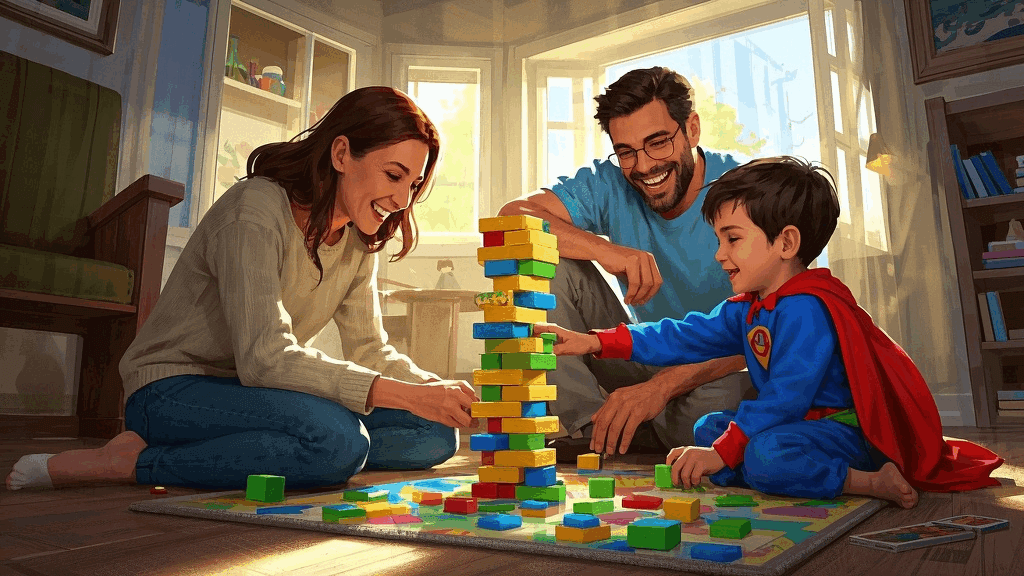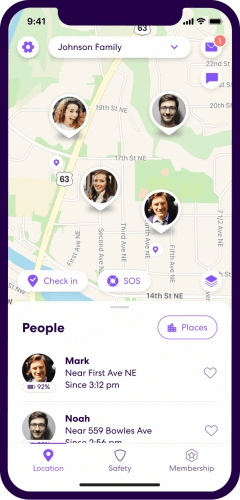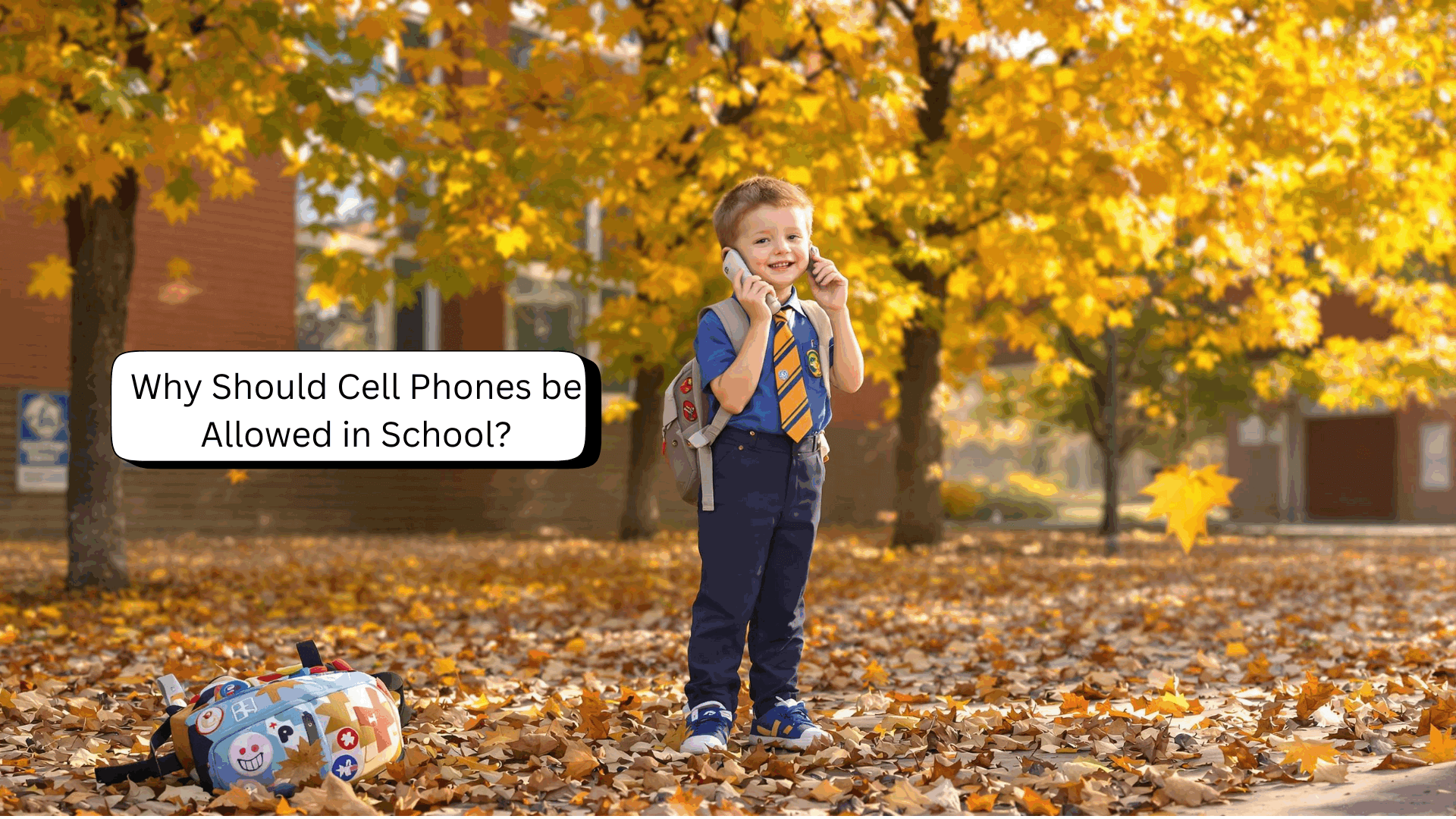FamiGuard Support: Monitor Devices with Others' Permission.
In today's fast-paced world, a child's attention is constantly vying for their focus – from buzzing screens to stimulating environments. While it’s natural for young minds to explore and flit between interests, a strong attention span is the cornerstone of a child's development.
For too long, the approach to improving children's focus has often relied on demanding silence and enforcing rigid concentration – methods that can feel like a frustrating battle for both child and caregiver. Fortunately, there's a more effective and enjoyable path. Instead of "forced focus," we can tap into the power of play. Engaging games and fun activities offer a natural and intrinsically motivating way to strengthen a child's concentration muscle, transforming what feels like a chore into an exciting adventure.

This article unveils 7 engaging activities, all backed by science, designed to help your child develop laser-like focus while laughing and learning along the way. Get ready to discover how these playful strategies can make a real difference in your child's ability to concentrate and flourish!
Contents
Part 1: 7 Fun Activities to Improve Focus in Kids
Part 2: Parent's Guide to Implementation
Part 3: FAQs
7 Fun Activities to Improve Focus in Kids
1. Follow the Leader: Advanced "Simon Says"
Dr. Ellen Braaten Associate Director of The Clay Center for Young Healthy Minds at Massachusetts General Hospital, explains that games requiring children to hold and manipulate verbal instructions strengthen the same cognitive systems needed for academic success.
This game powerfully develops auditory processing and working memory—two critical components of attention. Children must hold multiple instructions in mind while executing them in sequence, which directly strengthens the neural pathways involved in classroom listening. The impulse control required (especially in reverse mode) builds the inhibitory control that helps children resist distractions.
Method:
This elevated version of the classic "Simon Says" incorporates multi-step commands and reverse challenges. Instead of simple instructions like "touch your nose," try sequences: "Touch your ears, then jump twice, then sit down." For advanced players, try reverse commands where children must do the opposite of what you say.
Pro Tip:
Make it relevant to their interests! When my dinosaur-obsessed nephew struggled with this game, I reframed it as "Paleontologist Training," with commands like "Dig for fossils, catalog your find, then run from the T-Rex!" His engagement skyrocketed immediately.
2. Schulte Grid: Visual Focus Trainer
A 2019 study in the International Journal of Psychological Research found that regular practice with Schulte tables improved selective attention and visual processing speed in elementary school children after just six weeks of practice. The researchers noted particular benefits for children with attention difficulties, as the activity trains the brain to systematically scan visual information rather than jumping randomly between stimuli.
This activity, originally developed for speed reading training, dramatically improves visual scanning efficiency and attention distribution. Children develop the ability to quickly process visual information while ignoring distractions—skills directly applicable to reading, math, and classroom focus.
Method:
Create a 5×5 grid filled with randomly arranged numbers from 1-25 (or use letters, shapes, or pictures for younger children). The child must find and point to each number in sequence as quickly as possible. Time their efforts and challenge them to beat their personal best.
Pro Tip:
For younger children (ages 4-5), start with a 3×3 grid using numbers 1-9. For children who find numbers boring, use their favorite characters in sequence: all the Paw Patrol pups, Pokémon evolutions, or Disney princesses in alphabetical order.
3. Copy the Structure: Memory & Observation Game
This activity strengthens visual-spatial working memory—the ability to hold an image in mind while manipulating objects. This cognitive skill directly transfers to mathematics, reading comprehension, and following visual instructions in the classroom.
Method:
Using building blocks, LEGO, or even household items, create a simple structure. Allow your child to study it for 30 seconds, then hide it. Challenge them to recreate the exact structure from memory.
Pro Tip:
an refer back to them. This allows you to objectively show what was different in their recreation, turning mistakes into learning opportunities rather than disappointments.
4. Detective Time: "What's Different?" Challenge
This game develops remarkable observational skills and attention to detail. Children learn to create mental snapshots and compare them to present reality—a cognitive process that strengthens both visual memory and sustained attention.
The activity also builds cognitive flexibility as children learn to shift their attention between the whole arrangement and specific details, a skill that helps with reading comprehension and mathematical problem-solving. Dr. Peg Dawson, co-author of "Smart but Scattered," identifies this type of flexible attention as crucial for academic success, particularly as school demands increase in upper elementary grades.
Method:
Arrange 5-10 objects on a tray or table. Have your child study them carefully for one minute, then ask them to close their eyes or turn around while you change something subtle—moving an object slightly, removing one item, or adding something new. Challenge them to identify what changed.
Pro Tip:
For younger children, start with just 3-4 distinct objects and make obvious changes. For older kids, use similar items (like different colored pencils) and make subtle changes to increase difficulty.
For families with multiple children, create a points system where children take turns being the "change maker"—this builds both attention skills and turn-taking abilities simultaneously.
5. Rhythm & Freeze: Dynamic Focus Practice
Research from the Auditory Neuroscience Laboratory at Northwestern University shows that rhythmic activities strengthen the neural pathways that process sound, which improves attention to verbal instructions in the classroom. Dr. Nina Kraus, the lab's director, has demonstrated that rhythmic training creates measurable changes in how efficiently the brain processes auditory information—changes that correlate with improved attention and reading skills.
Rhythm matching develops auditory attention and sequential processing—skills directly related to phonological awareness for reading. The freeze component builds inhibitory control—the ability to stop an enjoyable activity based on an external signal.
Method:
This two-part activity begins with rhythm matching: Clap a simple pattern and have your child repeat it exactly. Gradually increase the complexity of the patterns. Then transition to freeze dance: Play music and have children dance freely, but freeze instantly when the music stops.
Pro Tip:
For children who struggle with auditory processing, start with visual cues alongside the rhythm (like tapping a colored block in sequence). For high-energy children, incorporate whole-body movements into the patterns: "Stomp, clap, jump, clap."
aximize engagement, but consider varying the tempo—faster music for high-energy moments, slower for calming transitions.
6. Mazes & Connect-the-Dots: Focus on Paper
These activities develop visual tracking—the ability to follow a line or sequence with the eyes—which is essential for reading fluency. They also build planning skills as children must look ahead to avoid dead ends in mazes or anticipate the emerging picture in connect-the-dots.
Method:
Provide age-appropriate mazes and connect-the-dot activities that require sustained visual attention. For mazes, encourage children to trace the path with their finger first before using a pencil. For connect-the-dots, challenge them to identify the next number or letter without counting through the sequence.
Pro Tip:
For children who get frustrated easily, start with simpler mazes that have wider paths and fewer dead ends. Use erasable colored pencils so mistakes don't lead to discouragement.
Create personalized connect-the-dots by drawing simple outlines of their favorite characters and adding numbered dots—this personal touch significantly increases engagement. When my daughter was going through a unicorn phase, I created unicorn-themed mazes that extended her focus time from about 3 minutes to nearly 15 minutes—a 400% improvement simply by connecting the activity to her interests.
7. Story Chain & Role-Play: Immersive Attention
Dr. Marilyn Price-Mitchell, developmental psychologist and fellow at the Institute for Social Innovation, notes that narrative engagement is one of the most powerful ways to develop sustained attention because it activates both cognitive and emotional brain centers simultaneously.
Story chaining develops listening comprehension and verbal working memory as children must remember previous contributions while formulating their own additions. Role-play builds sustained attention through intrinsic motivation—children remain focused because they're invested in the narrative they're creating.
Method:
Begin a story with a simple opening line ("Once upon a time, there was a purple elephant who loved to skateboard...") and take turns adding to the narrative, with each person contributing one or two sentences. For role-play, establish character roles and a basic scenario, then let the imaginative play unfold.
Our family practices story chains during road trips. What began as a distraction technique has become a beloved tradition that has produced some hilariously creative tales and significantly improved my children's narrative skills. During our last 3-hour drive, the story chain about a time-traveling hamster kept all three children engaged for nearly 45 minutes—a minor miracle in the world of family travel.
Pro Tip:
For younger children, use visual cues like passing a special "story stone" to indicate whose turn it is to contribute. For children who struggle with open-ended creativity, provide story prompt cards with characters, settings, or problems to incorporate.

Parent's Guide to Implementation
1. Timing: Adjusting Duration by Age
The effectiveness of these activities depends heavily on appropriate timing. Here's a quick reference guide based on typical developmental stages:
| Age Group | Recommended Session Length | Frequency | Signs of Fatigue to Watch For |
|---|---|---|---|
| 3-4 years | 5-10 minutes | 2-3 times daily | Fidgeting, looking away, asking unrelated questions |
| 5-7 years | 10-15 minutes | 1-2 times daily | Rushing, making careless errors, physical restlessness |
| 8-10 years | 15-20 minutes | Daily | Complaining, seeking distractions, declining quality of work |
| 11-12 years | 20-30 minutes | 3-5 times weekly | Irritability, loss of interest, multitasking attempts |
2. Environment: Creating a Focus-Friendly Space
The physical environment significantly impacts a child's ability to concentrate. After observing my son's focus dramatically improve when we moved his activity space away from our busy kitchen, I've become intentional about creating designated focus zones:
Minimize visual distractions: Clear the immediate area of unrelated toys, flashing lights, or busy decorations. In our home, we created a simple "focus corner" with neutral wall colors and limited decorations.
Reduce noise pollution: Turn off background TV and move away from household traffic areas. I was shocked to discover through home recording how many interruptions occurred in our main living space—nearly one per minute during busy times.
Optimize comfort: Ensure proper seating where the child's feet can touch the floor or a footrest. After consulting with an occupational therapist, we discovered my daughter's fidgeting decreased by 60% simply by providing proper seating support.
Consistent location: Designate specific areas for focus activities to build associative cues. The brain forms environmental associations quickly—using the same space consistently signals to the nervous system that it's time to concentrate.
For my sensory-sensitive daughter, we created a "focus nook" with a small tent, cushions, and a battery-operated lantern. This defined space signals her brain that it's time for concentrated attention. The transformation was remarkable—her typical 5-minute attention span extended to over 20 minutes when working in this designated space.
3. Positive Reinforcement: The Language of Attention
The way we talk about focus dramatically affects a child's motivation to develop this skill. Specific, process-oriented praise is far more effective than general comments:
Instead of: "Good job paying attention!"
Try: "I noticed how you kept working on that puzzle even when the piece didn't fit the first time. That kind of persistence helps your brain grow stronger."
Instead of: "You need to focus better."
Try: "Let's see if you can find three more numbers on the grid before the timer runs out. I bet your scanning skills are getting faster!"
it's about helping them internalize the specific behaviors that constitute "good focusing" so they can reproduce them independently.
4. Follow Interests: Personalizing for Maximum Engagement
The most powerful implementation strategy I've discovered is tailoring activities to a child's existing passions. This connection transforms "attention practice" into "fun with my favorite things":
For vehicle-loving children: Use car-themed mazes, create block structures of bridges and garages, or make the Schulte grid with different types of trucks.
For animal enthusiasts: Role-play as different animals with corresponding movements in Rhythm & Freeze, use animal figurines for Detective Time, or create story chains about woodland creatures.
For artistic children: Connect-the-dots can reveal favorite characters, Copy the Structure can use colorful art materials, and Story Chain can focus on creating characters for later drawing.
FAQs
Q1: My child quits after a few minutes. What should I do?
Q1: My child quits after a few minutes. What should I do? A: This is incredibly common and usually indicates the activity is either too difficult or not engaging enough. Start by dramatically shortening the expected duration—even just 2-3 minutes of successful focus builds confidence. Then analyze what's causing the disengagement:
- If frustration is the issue, simplify the activity (fewer blocks, simpler patterns).
- If boredom is the problem, add elements connected to their interests or incorporate movement.
- If distraction is the challenge, modify the environment to reduce competing stimuli.
With my easily discouraged daughter, I implemented the "one more" strategy: when she wanted to quit, I'd say, "Let's just do one more before we stop." This small success often renewed her interest, and gradually we built up to longer sessions.
I also discovered the power of the "sandwich method"—placing a challenging focus activity between two highly preferred activities. The anticipation of the reward activity often provides just enough motivation to persist through the challenging middle section.
Q2: Can video games improve attention
A: Many commercial games create what researchers call "continuous partial attention"—a state that actually fragments focus rather than strengthening it. Additionally, the high stimulation level of many games can make lower-stimulation tasks (like classroom work) seem unbearably boring by comparison.
My recommendation is to prioritize real-world, multisensory activities for attention development while maintaining reasonable limits on screen time. If you do incorporate digital games, choose those specifically designed for cognitive skills development and limit sessions to 15-20 minutes.
Q3: What's the right age for these activities?
A: All seven activities can be adapted for children from preschool through upper elementary years:
For ages 3-4:
Follow the Leader: Use simple 2-step physical commands
Detective Time: Use 3-4 distinct, colorful objects
Rhythm & Freeze: Focus on the freeze component with favorite music
For ages 5-7:
Schulte Grid: Use a 3×3 grid with numbers 1-9 or favorite characters
Copy the Structure: Begin with 3-5 block arrangements
Mazes: Choose simple paths with minimal dead ends
For ages 8-12:
Story Chain: Add constraints like "must include a problem and solution"
Schulte Grid: Use 5×5 grids with mixed content (numbers and letters)
Follow the Leader: Incorporate reverse commands and complex sequences
Conclusion
In summary, developing attention as a skill requires consistent practice rather than pressure, and engaging in regular play can lead to significant long-term benefits. We invite you to share your child's progress or unique game ideas in the comments to foster a supportive community.
Hi there! I’m Sarah Margaret, a mom of three and the voice behind this blog where I share honest parenting stories and practical tips about family anxiety, home safety, and nurturing love—because let’s face it, parenting is equal parts joy and chaos! After countless sleepless nights and "I’m-not-sure-I’m-doing-this-right" moments with my own kids, I created this space to help fellow parents feel less alone. You’ll find real talk about childproofing hacks, calming routines, and keeping your family strong—no perfection required, just progress. So brew some coffee (or reheat that forgotten cup), and let’s navigate this wild parenting journey together!
Thank you for your feedback!






































